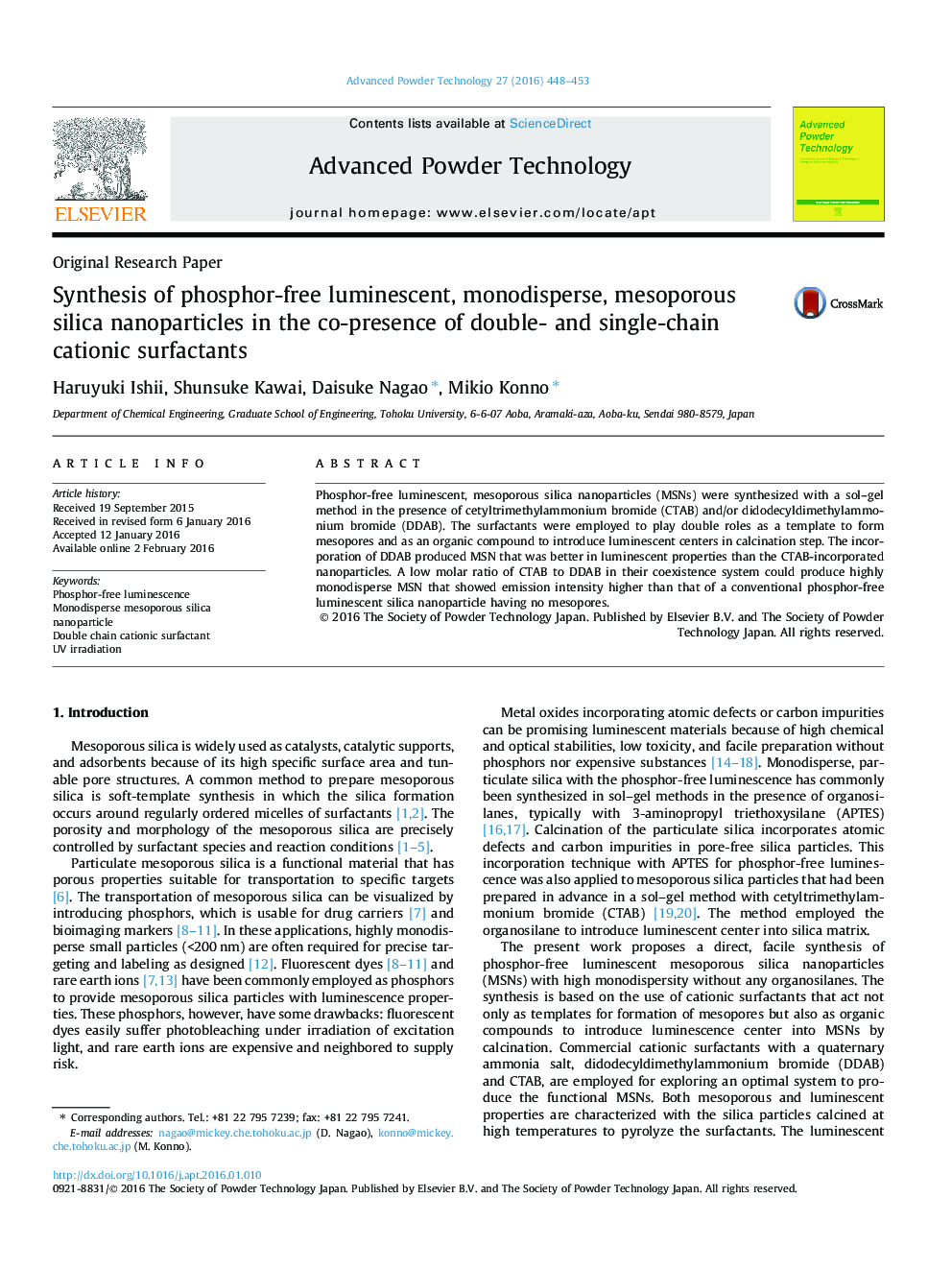| Article ID | Journal | Published Year | Pages | File Type |
|---|---|---|---|---|
| 144117 | Advanced Powder Technology | 2016 | 6 Pages |
•Monodisperse mesoporous silica nanoparticle (MSN) with phosphor-free luminescence.•Coexistence system of single- and double-chain cationic surfactants.•Dual roles of double-chain surfactant to form mesopores and luminescence centers.•Stronger luminescence of MSN than that of conventional nonporous silica nanoparticle.
Phosphor-free luminescent, mesoporous silica nanoparticles (MSNs) were synthesized with a sol–gel method in the presence of cetyltrimethylammonium bromide (CTAB) and/or didodecyldimethylammonium bromide (DDAB). The surfactants were employed to play double roles as a template to form mesopores and as an organic compound to introduce luminescent centers in calcination step. The incorporation of DDAB produced MSN that was better in luminescent properties than the CTAB-incorporated nanoparticles. A low molar ratio of CTAB to DDAB in their coexistence system could produce highly monodisperse MSN that showed emission intensity higher than that of a conventional phosphor-free luminescent silica nanoparticle having no mesopores.
Graphical abstractFigure optionsDownload full-size imageDownload as PowerPoint slide
